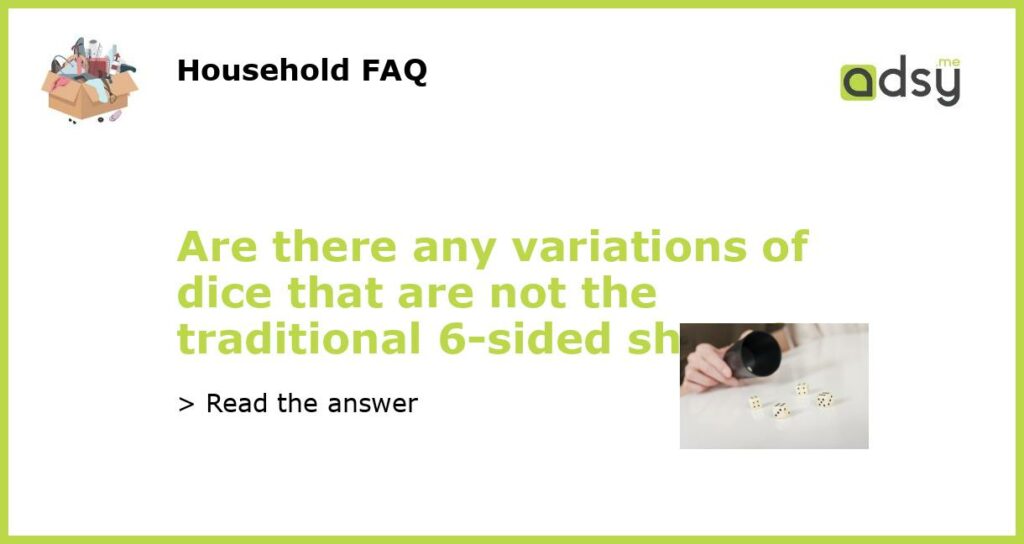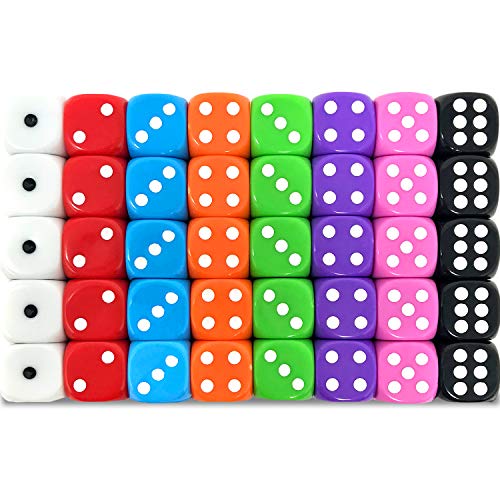Variations of Dice: Beyond the Traditional 6-Sided Shape
When we think of dice, the first thing that comes to mind is a small cube with six sides, each side bearing a different number of dots. However, traditional 6-sided dice are not the only variant available on the market. In fact, dice can take on an endless variety of shapes and sizes, each contributing a unique element of chance to game play. In this article, we’ll explore some of the most common types of dice beyond the typical 6-sided shape.
Platonic Solids: A Family of Dice
A platonic solid is a 3D shape in which all faces are the same regular polygon and all vertices are connected by the same number of edges. The platonic solids have been revered for centuries by philosophers and mathematicians, and their highly symmetrical shapes have become popular in games and gaming alike. Platonic solid dice come in a variety of shapes, including:
- Tetrahedrons: Four-sided dice (pyramids)
- Cubes: Six-sided dice
- Octahedrons: Eight-sided dice
- Dodecahedrons: Twelve-sided dice
- Icosahedrons: Twenty-sided dice
Each of these dice is numbered differently and can offer unique challenges to game play, depending on their shape and complexity.
Non-Platonic Shapes
While platonic solids are popular among gamers, they aren’t the only option available. Many manufacturers offer dice in various shapes, ranging from the recognizable to the truly bizarre. Some popular non-platonic dice include:
- Crystal-shaped dice, usually made of transparent plastic or glass
- Barrel-shaped dice, which have a more cylindrical shape with curved ends
- Spherical dice, which are essentially small balls with numbered faces
- Diamond-shaped dice, which can have as few as two and as many as eight faces
- Custom Shapes, which can be made to look like anything from skulls to animals
Non-platonic dice can be used for a variety of purposes, including as collectibles or memorabilia. For gaming, they can add a unique element of chance and strategy, as players must learn how the different shapes roll and balance.
Dice Beyond Numbers
Dice don’t necessarily have to bear numbers at all. In some cases, shapes or symbols can replace traditional numerical values, creating a new level of complexity and intrigue for gamers. Some examples of symbolic dice include:
- Rune dice, which feature symbols from ancient alphabets and mythologies
- Elemental dice, which bear images of the elements (water, fire, earth, air)
- Tarot dice, which employ tarot card images to represent different outcomes
- Luck dice, which can have simple images, like horseshoes and clovers, or more complex designs, like lucky cats or rainbows
Symbolic dice can add a new level of intrigue to gaming, as players must consider not only numerical outcomes, but also the meanings behind the symbols or shapes on the dice.






